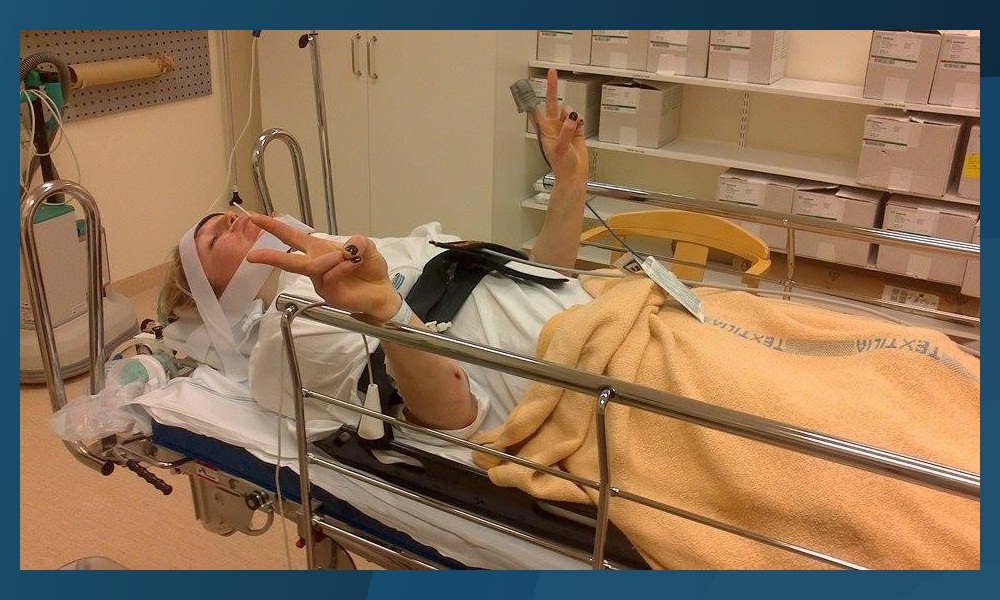The UK’s top female alpine skier has escaped long-term injury after breaking her back in a training accident.
Charlie Guest, who is originally from Perth, landed on a boulder when training in Sweden.
She suffered spinal injuries and was strapped to a board for eight hours as an ambulance took her 250 kilometres to hospital at Ostersund.
There were fears the injury could be career-ending but despite fracturing vertebrae it appears she may have escaped permanent injury thanks to a back protector her coach Stefan Moser had insisted she wear that morning.
Now back in the UK, Charlie is being closely monitored by doctors and physios and hopes to make a full recovery although she does not know when she will be able to resume training.
Charlie, who has been updating followers on her blog, said: “The accident happened in quite a remote area, so after eight hours strapped down to a board and a 250km ambulance journey I was pretty terrified about how serious my injuries were.
“Whilst I’m devastated that I am going to have to take time out to recover, I realise how extremely lucky I am that my injuries are not more severe. I owe my coach Stefan the biggest thank you of my life for his insistence that I wear my back protector.”
Stefan Moser, Charlie’s coach, added: “Safety should come first, ahead of anything else and I began to insist that Charlie wore her back protector, no excuses. I saw Charlie’s accident and I know she is very fortunate to be looking at a full recovery, even if it keeps her out of action for some time.”
This was only the third time Charlie had worn her back support when Giant Slalom training, but now, after such a major scare, she wants to see back protection become a compulsory safety requirement for all skiers across the disciplines.
She said: “This was a massive reality check for me. I won’t be skiing again without wearing the correct safety gear.
“As someone who spends so much time dedicating myself to my sport, it is easy to forget just how dangerous skiing can be. It is so important to think about safety and I want to help other people avoid career-ending and even life threatening injuries. It could so easily have been a different story for me.”
Statistically, the number of accidents on the ski slopes are low and serious injuries are rare.
In Scotland, for every 1000 skiers out on the slopes, just over two people will sustain an injury that requires medical attention.
The vast majority of fatal ski accidents, which are also incredibly unusual, are caused by head injuries.
The most common injuries for all skiers, from novice to professional is to the ankle sprains or torn ligaments.
